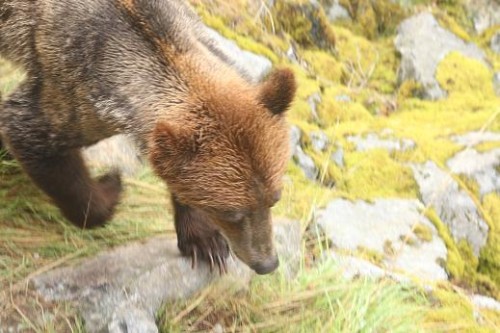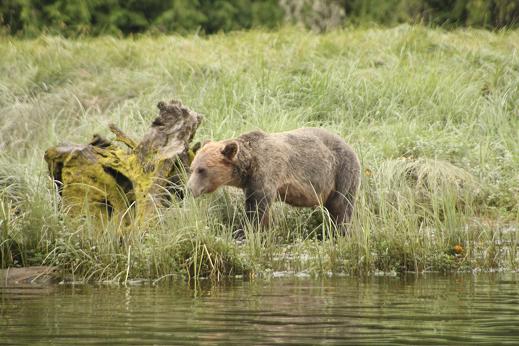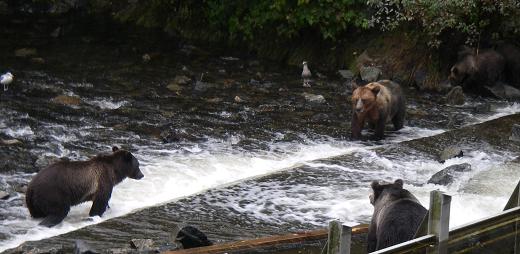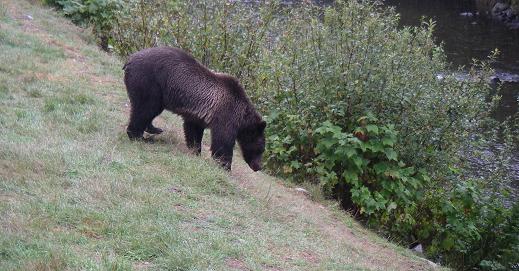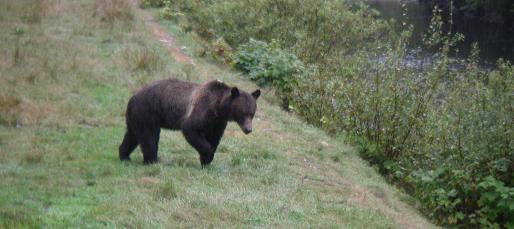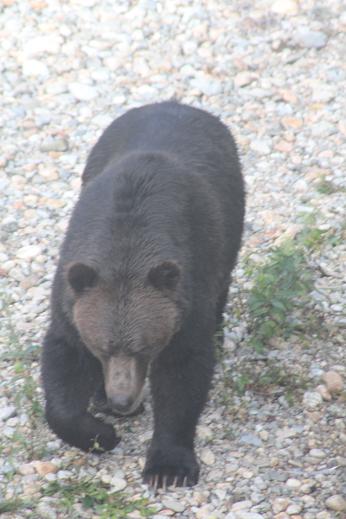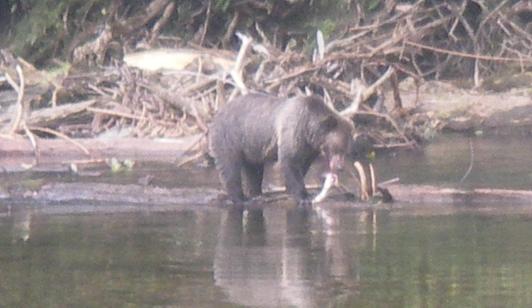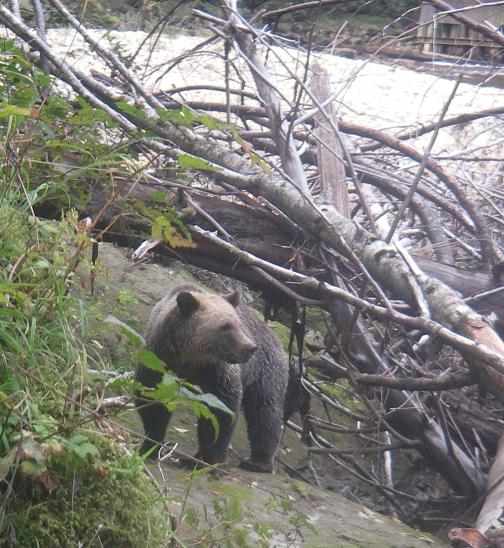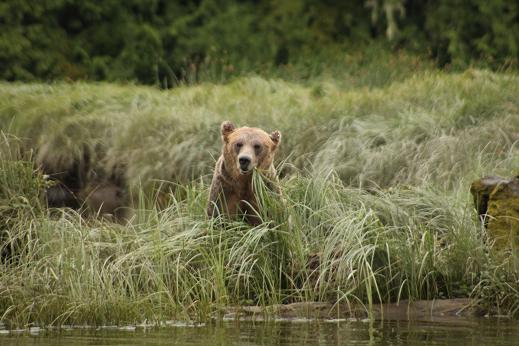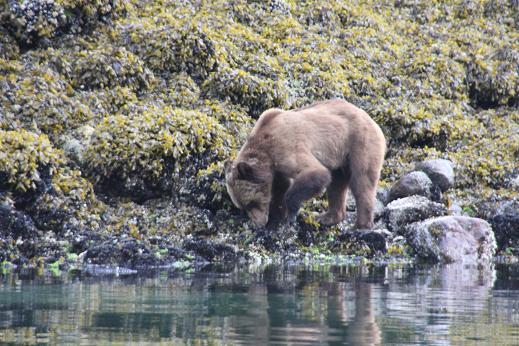The grizzly bear claws are incredibly long, thick and powerful. The nails themselves can be 5 to 6 inches long. They use them to do more digging than any other bear species, digging dens, uprooting shrubs, shredding logs and stumps in search of insects and tubers, and turning over rocks on the beach. Also used to catch and hold salmon while they eat. This over head view is of a grizzly as it walks beneath the viewing stands on Knight Inlet’s Glendale River where we spend our viewing time after August 24th.
